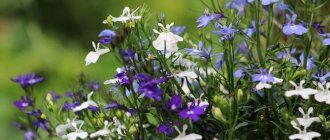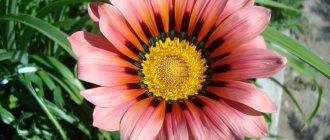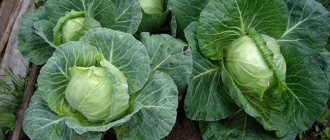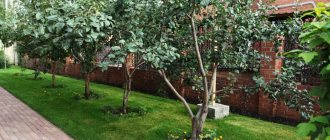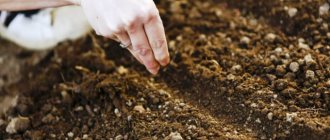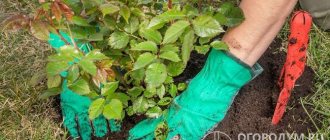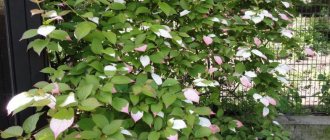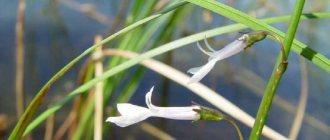Author: Elena N. https://floristics.info/ru/index.php?option=com_contact&view=contact&id=19 Category: Garden plants Published: February 18, 2016Last edits: June 01, 2021
- Watering seedlings
Spring always begins unexpectedly, but this does not mean that you do not need to prepare for it, especially if you have pleasant gardening chores ahead, and therefore in January it is time to calculate the time for sowing vegetable seeds for seedlings. Growing seedlings seems to be a simple and uncomplicated task, but it is deceptively simple, and you will be convinced of this after the first mistake. In fact, healthy seedlings at home require not only high-quality seed material and your efforts, it requires certain knowledge, which we are ready to share with you.
What flowers are sown for seedlings in February
In February, seedlings of flower crops with a long growing season are sown so that they have time to bloom in the open ground as early as possible. Such crops include both annual flowers and perennials, for example:
- petunia,
- lobelia,
- carnation Shabo,
- ever-blooming begonia,
- salvia,
- viola,
- eustoma,
- heliotrope.
Some of them require preliminary stratification:
- aquilegia,
- Arizema,
- gentian,
- codonopsis,
- iris,
- clematis,
- primrose,
- alpine bell,
- jeffersonia,
- princes,
- breaker,
- lumbago,
- lavender angustifolia,
- swimsuit
Among the flowers sown for seedlings in February, there are those that feel great both in the garden and on the windowsill, for example, balsam, fuchsia and pelargonium. We will tell you about sowing the most popular flowers in more detail.
- How to grow foxglove seedlings from seeds: sowing, picking, fertilizing
Petunia
This is the favorite flower of many gardeners, hardy and unpretentious, represented by a colossal number of varieties of various colors. The only drawback of these amazing and fragrant flowers is their intolerance to rain and wind - their petals lose their attractiveness due to bad weather. Although recently hybrids have appeared that are resistant to adverse events. Petunias look great in a flower bed, in balcony containers and hanging structures.
A coated food container is often used as a container for growing petunia seedlings, which makes an excellent greenhouse for seedlings. This container is easy to ventilate; its transparent lid allows light to pass through. In a container, seedlings can grow until they grow. Or you can sow flower seeds in seedling boxes and cover them with film or glass to create a greenhouse effect.
The soil for petunia seedlings must be moisture-absorbing and fertile. You can buy ready-made soil and add 1 part sand to it in 5-6 parts. If you prefer to prepare the soil for petunia yourself, then mix sand, peat and garden soil in a 2:1:1 ratio, then sift and steam the resulting soil mixture for disinfection for an hour. The optimal soil composition for petunia seedlings is a mixture of soil with hydrogel, previously soaked in Kemira solution. In such soil, seedlings receive both the necessary moisture and additional nutrition.
Sow petunia seeds at the end of February or beginning of March on top of the soil, without deepening them, otherwise they will not germinate. Small seeds are laid out on the surface using toothpicks: one marks the place where the seed should be placed, and the other, wet, picks up the seed and transfers it to the intended place. Using this technique, you can sow petunia seeds at an equal distance from each other. It is convenient to sow them on a layer of snow, on which the seeds are clearly visible. The seeds spread on the surface are sprayed with water from a spray bottle, after which the container is covered with a lid or film.
4 steps to get healthy petunia seedlings
If you sow seeds in the snow, you do not need to moisten them. Petunia seedlings are germinated at a temperature of 20-25 ºC, removing the lid daily to ventilate and remove condensation.
10-14 days after sowing, seedlings can be expected to appear. If they have not appeared after two weeks, replant the petunia. After seed germination, the seedlings are kept in a well-lit place, but protected from direct sunlight. For growth and development, seedlings need long daylight hours: if there is not enough light, the seedlings will stretch out and grow weak, so be prepared to provide additional lighting for the seedlings.
Petunia seedlings develop very slowly, at least at first. When the seedlings grow up and begin to touch the lid, the covering is removed. Petunia is very demanding when it comes to watering; it reacts painfully to dry soil. Water the seedlings at the root, or even better, in a tray so that drops of water do not fall on the delicate leaves.
During the seedling period, petunia seedlings are transplanted into larger pots 2-3 times before planting in the ground. The seedlings dive for the first time when their stems can be held with your fingers. The seedlings are transplanted into small disposable cups. After picking, the daytime temperature is reduced to 18-20 ºC, and the night temperature to 15 ºC. The root system of petunias is branched, and until the weather allows you to plant them in the ground, you will have to replant them once or twice in a large container.
For normal development, seedlings are fed with complex flower fertilizer. But if you grow them in soil with hydrogel, then you can do without fertilizing. When petunias reach a height of 5-7 cm, they are pinched above 4-5 leaves.
Gatsania
This is a perennial African plant of the Asteraceae family, 25-30 cm high. In our climate, gazania is grown as an annual. Gatsania requires 3-3.5 months from sowing to flowering; planting seeds in February for seedlings can speed up this process, but be prepared for the fact that you will have to organize additional lighting for the seedlings - seedlings need 14-16 hours of daylight for normal development .
Sow the seeds in light, loose soil with a pH value of 5.5-6.5 units, placed in seedling cassettes with a cell volume of 25 ml. Small gatsania seeds are buried 1 cm into the soil. You can use the same method as when planting petunia - spread the seeds over the surface in a checkerboard pattern at a distance of 3 cm using a damp toothpick, and sprinkle them with a layer of soil on top.
But it’s even better to use peat tablets for seedlings, and you won’t have to deal with picking gatsania in the future. Before sowing, the tablets are soaked in water so that they swell, then the excess water is allowed to drain from them, after which the tablets are placed in a cuvette, in which they will remain throughout the seedling period, and with tweezers, if the seeds are pubescent, one seed is immersed in each tablet. required depth. It is better to transfer slippery seeds onto the tablet with a wet toothpick.
- Caring for Exhibition onion seedlings: feeding, pruning, supports
Whatever container you prefer, after sowing, the seeds are sprayed with a spray bottle, covered with film or glass and placed in a bright place where the temperature is between 21-24 ºC. Every day you need to remove the covering to ventilate and remove condensation from it. For seed germination, the top layer of soil must be slightly moist at all times, but excess moisture leads to seedlings becoming infected with blackleg.
In one or two weeks, shoots will appear, and as soon as this happens, the film is removed, the temperature is lowered to 18-20 ºC, and the top layer of soil is allowed to dry out slightly between waterings. If you grow gatsania seedlings in tablets or deep containers, then you don’t have to pick the seedlings, but if the container is shallow, in the development phase of four true leaves, pick the seedlings into 0.5 liter peat pots and grow the seedlings at a temperature of 12-16 ºC, for example, on an unheated veranda or loggia.
A week after picking, feed the plant with fertilizer for flowering plants in a weak concentration.
Lobelia
When this charming plant blooms, its foliage is almost invisible due to the mass of small flowers of surprisingly bright and pure colors. Lobelia is grown as a ground cover and hanging plant, filling empty spaces with it and decorating unsightly balcony structures.
We sow lobelia seedlings in early or mid-February - it will take 8-10 weeks before flowering begins. A layer of expanded clay or crushed bark is poured into a container for seedlings 5 cm deep, and a light soil of neutral reaction is placed on top, consisting of two parts of turf soil, two parts of humus or compost, two parts of non-acidic peat and one part of river sand. The soil is well moistened, then the seeds are sown, mixed with dry sand and not buried in the soil. The container is covered with film or glass and placed under bright, diffused light. The germination temperature of lobelia seeds is 20-22 ºC.
Make sure that the soil in the seedling box never dries out, and do not leave the crops without film for a long time if the room temperature is above 22 ºC - both dry soil and dry, too warm air are detrimental to lobelia.
Lobelia seedlings will appear approximately a week or two after sowing, and they are immediately moved to cooler conditions - 16-18 ºC. Seedlings need bright, indirect light for 12-14 hours to grow, and since the days are still short at this time of year, you will need to provide artificial lighting for the seedlings. You need to water seedlings at this age very carefully, through a tray or pouring water under each seedling with a teaspoon. But even if you create royal conditions for lobelia seedlings, they will grow very slowly for the first month.
When the seedlings grow to 3-4 cm in height, the seedlings are picked in bushes of 3-4 pieces in disposable cups with a diameter of 5 cm. A week after picking, the seedlings are fed with a solution of complex mineral fertilizer. When the seedlings reach a height of 6-7 cm, they need to be pinched to stimulate branching.
Begonia everblooming
Begonia is sown in January or early February. The most suitable soil for it is two parts humus, one part leaf soil and one part sand, spilled for disinfection with a one percent solution of foundationazole or potassium permanganate. The soil is placed in a box or cassette, lightly compacted, and begonia seeds are sown on top without embedding them in the soil. The container with the inoculation is covered with film or glass and kept in a bright place at a temperature of 20-22 ºС. The crops are sprayed with water from a spray bottle every morning, after which they are left uncovered for 1-1.5 hours for ventilation. Condensation is removed from the film or glass.
In 10-15 days the seedlings will appear, but it is too early to remove the glass - this is done only after 2-3 weeks, but for now you need to ventilate the seedlings daily, removing condensation so that not a drop gets on the seedlings. The temperature after emergence is reduced to 17-19 ºС. Seedlings grow slowly, so they are plucked a month or a month and a half after germination, when they develop 2 leaves.
If you pick seedlings into a box, then a month after the first picking you will have to do a second one, and to avoid this, plant them in individual pots in soil of the same composition as when sowing. After a month and a half, fertilize the soil with a solution of bird droppings (1:20) or complex mineral fertilizer.
Carnation Shabo
It will not be possible to grow this flower without seedlings - almost six months pass from the moment of sowing to the start of flowering, and you can’t throw seeds into frozen ground. Sowing of cloves for seedlings is carried out until mid-February in soil consisting of turf soil, sand, humus and peat. The seeds are soaked for several hours in a solution of a growth stimulator, after which they are laid out on the surface of well-moistened soil, sprinkled with a layer of calcined sand 3-4 mm thick, covered with glass and kept at a temperature of 23-25 ºC. The glass is regularly lifted to ventilate the crops and remove condensation.
Mass germination of seeds begins in about a week, although some seedlings appear on days 4-5. With the appearance of sprouts, the container with sowing is transferred under bright diffused light to a cool place - 16-18 ºC during the day and 14-15 ºC at night. The film is removed for the day, and the crops are covered again at night. When the seedlings begin to come into contact with the film or glass, build a transparent dome - you can use a transparent cake lid or a plastic box from cakes. If the seedlings have sprouted too densely, thin out the seedlings five days after their appearance.
Watering is carried out as the top layer of soil dries so that the stream of water does not damage the fragile seedlings, so it is better to use a spray bottle. Do not water the seedlings too often and abundantly - this causes the seedlings to stretch out and become infected with blackleg. Organize artificial supplementary lighting for the seedlings so that the daylight hours are at least 12-14 ºС.
- Muscari - garden care
Shabot carnations are picked twice: in the development phase of the first two true leaves and in the second half of March. Picking is a strong development stimulus for seedlings of this crop. The first time the seedlings are transplanted into a larger container according to a 4x4 cm pattern, the second time they can be planted in separate pots without deepening the root collar. The seedlings are kept in cool conditions, and around mid-April, when the seedlings have developed five leaves, their tops are pinched.
Lavender angustifolia
Lavender is a charming, fragrant plant that is easy to grow both in the garden and on the balcony. Those who once saw the delicate leaves and spherical, lilac-lilac bushes of lavender will definitely want to grow them in their garden. In addition to all the obvious advantages of the plant, lavender is an excellent honey plant that attracts bees to your garden.
Growing lavender - planting and care in the garden
Before sowing lavender seeds for seedlings in February, they are stratified for one and a half to two months in the vegetable department of the refrigerator, after having been mixed with wet sand or peat and wrapped in a container with this mixture in polyethylene. A few hours before sowing, the seeds are soaked in a warm biostimulant solution. The soil for lavender is made up of three parts of garden soil, one part of sand and two parts of humus, it is thoroughly kneaded, sifted, calcined at a temperature of 110-130 ºC or spilled with a pink solution of potassium permanganate.
A layer of drainage and moist soil are placed in the seedling box, on which the seeds are laid out, and on top they are sprinkled with a layer of sand 3-5 mm thick, sprayed with water from a spray bottle and covered with transparent material. Contain lavender crops in a bright place at a temperature of 18-22 ºC. The crops are sprayed and ventilated from time to time, getting rid of condensation.
When shoots appear after two weeks, the covering is removed and the temperature is lowered to 15-18 ºC. Seedlings are watered moderately in the morning or evening; they respond well to spraying with warm, settled water. Daylight for normal growth of seedlings should be no shorter than 10 hours, so you will have to organize additional lighting for them.
In the development phase, the seedlings have 2-3 pairs of true leaves, they are picked 5-6 pieces in separate pots, burying the seedlings up to the cotyledon leaves, and a week after picking they are fed with a solution of mullein or complex mineral fertilizer. When the seedlings develop 5-6 pairs of leaves, the tops of the seedlings are pinched to stimulate tillering.
Salvia
Salvia, or sparkling sage, is grown as an annual plant in our gardens. From the moment of sowing until the beginning of flowering, salvia takes from 100 to 120 days. Seedlings at home ripen much faster than if you sow salvia seeds in open ground, so we recommend that you use the seedling method of growing salvia.
Salvia seeds are sown in mid-February in loose, moist soil to a depth of 2-3 mm, sprinkled with water, covered with paper or glass and kept until germination at a temperature of about 25 ºC, watering the pan as needed. For germination, seeds need from a week to a month, and as soon as shoots appear, the covering is removed, the container with the sprouts is moved to a southern windowsill under bright, diffused light and artificial lighting lamps are installed near them in order to increase the daylight hours for seedlings to 12 hours a day .
Content temperature – 18-20 ºC. Water the seedlings moderately and regularly with warm water, adhering to the principle of the golden mean: the soil should not dry out, but at the same time, the seedlings should not suffer from waterlogging. Feed the seedlings two weeks after emergence with complete flower fertilizer.
When 2-3 leaves appear, the seedlings are planted at a distance of 5-7 cm between the seedlings, burying them down to the cotyledon leaves. A week after the first picking, the seedlings are fed a second time, and three weeks later, a second picking is carried out in separate pots with a diameter of 10 or 12 cm. In the development phase of two pairs of leaves, the tops of the seedlings are pinched.
Heliotrope
Today, heliotrope is becoming popular again, and it has the right to do so: the wonderful vanilla aroma is not the only advantage of the flower. It looks great both in balcony containers and in flower arrangements in a flower bed. From the moment of sowing heliotrope seeds until the beginning of its flowering, 12-16 weeks pass, so you need to sow heliotrope seeds for seedlings at the end of February.
The best soil for heliotrope seedlings is a steam-disinfected soil mixture of one part sand and four parts peat, although store-bought flower soil can also be used. Heliotrope seeds germinate only in the light, so when sowing they are not buried, but only lightly pressed to the surface of the soil compacted with a board. The container with the sown seeds is covered with glass and kept in the light at a temperature of 18-20 ºC. Shoots may appear in a week, or maybe in twenty days, but as soon as the seeds germinate, the coating is removed.
If the window sill is not north-facing, then the seedlings will not need additional lighting. The temperature required for normal growth of seedlings is 20-22 ºC. Remember to protect the seedlings from direct sunlight. Watering is done with settled warm water as the soil dries.
When two true leaves appear, the seedlings dive one at a time into pots with a diameter of 10 cm, filled with the same mixture in which you sowed the seeds. After picking, the seedlings are watered, and after two weeks they are fed with fertilizer for seedlings.
Viola or Wittrock's violet
If you want a two-year-old violet to bloom this year, sow it for seedlings in February, especially since it blooms for a long time, grows well and is completely undemanding to care.
Viola seeds, previously soaked for 24 hours in a solution of Zircon or Epin, are sown in a wide container with drainage holes, filled with a substrate for violets steamed at a temperature of 180-200 ºC and well moistened and sprinkled with a small layer of soil rubbed between the palms, after which the surface is sprayed with water. Contain crops at a temperature of 15-18 ºC.
After the seedlings emerge, and the viola seeds germinate in a week and a half, the cover is removed from the container, the plants are moved closer to the light, shaded from direct sunlight, and kept at a temperature of 10 ºC. After a week, the seedlings are fed with a weak solution of complete mineral fertilizer and continue feeding once every two weeks. When the first leaves appear on the seedlings, they stop moistening the soil from above and switch to watering in the pan.
They pick the viola in the phase of development of two true leaves, and it is better to transplant it into separate pots - you won’t have to pick it a second time. If you pick seedlings into a box, then after 2-3 weeks you will have to pick them again, according to the 6x6 pattern. During the first picking, seedlings are buried into the ground up to their cotyledon leaves.
Verbena
Verbena is picky and charming, and if properly cared for, it retains its beauty until early autumn. Verbena seeds are sown on the surface of the soil, after which the container is covered with glass, and if the crops are kept at a temperature of 25 ºC, the seeds germinate within 3-4 days, and at normal room temperature 18-20 ºC, seedlings will appear in a week. As soon as this happens, the container is moved to cooler conditions under bright, diffused light. Ventilate the crops daily and remove condensation from the glass.
When watering, care should be taken, since excess moisture can lead to disease and even death of seedlings.
In the development phase of two pairs of leaves, the seedlings are picked in separate pots, and a week after picking, the seedlings are fed with complex mineral fertilizer. To stimulate branching, they are pinched above the 5-6th leaf.
We told you about growing flower seedlings, the most popular among gardeners. We offer you general information about how plant seedlings are grown, and we hope that this information will be useful to you.
Answers to frequently asked questions
What flowers should I sow in February?
Petunia, lobelia, snapdragon, pansy, primrose are an ideal choice for any gardener.
What to do if you can’t buy phytolamps?
Install food foil reflectors on the sides of the window opening. This will help extend the daylight hours a little. Sow seeds for seedlings towards the end of February, when the days are longer.
Is it possible to sow on a dying moon?
Not recommended. Moreover, in February of this year the moon will wan in the first half of the month, when the time has not yet come for sowing flowers for seedlings.
Caring for flower seedlings in February
Watering seedlings
The seeds are sown in moist soil, after which the crops are moistened with a spray bottle and the container is covered with film, paper or glass, which protects the soil from drying out. Therefore, usually the crops are no longer watered before germination - you can simply spray the soil with a spray bottle. When the seeds germinate and the covering is removed, until the seedlings have 3-4 leaves, watering is best done with melt water: bring some snow from the yard in a bucket and let it melt.
If the winter is snowless, prepare “living water” for the seedlings yourself. To do this, heat the water on the stove until the first bubbles appear, remove from the heat and cool quickly. “Living water” is a potent remedy, so watering with such water should be alternated with moistening the soil with settled tap water at room temperature.
Temperature
The temperature in the room where seedlings are grown is the most important factor in the success of the process. Most garden flowers germinate at a temperature of 18-20 ºC, however, there are species whose seeds need cooler or, conversely, warmer indoor air:
- snapdragon germinates at 8-12 ºC;
- perennial daisy – at 12-15 ºC;
- viola, Carpathian bell, heuchera and carnation - at 15-18 ºC;
- pelargonium, primrose, Tagetes erecta and cineraria maritima - at 18-21 ºC;
- coreopsis grandiflora – at 20-24 ºC;
- Waller's balsam - at 22-25 ºC.
After the emergence of seedlings, the temperature is lowered by 2-3 degrees; after picking, another slight decrease in temperature occurs. A week or two before planting, it is necessary to begin hardening off the seedlings, gradually accustoming them to the conditions in which they will grow in open ground - to fresh air, the difference between day and night temperatures, wind and sun. To do this, they are placed on a balcony or terrace, first for a short period of time, but every day increasing the duration of such a session. At the time of planting, flower seedlings should be in the fresh air around the clock.
Picking
Scientists are divided on the need to pick plants. Some argue that pickled plants develop a better root system, are more hardy and adapt faster in open ground. Others believe that picking just slows down the development of the seedling; after transplanting, it has to start from scratch, and the seedlings lose 2-3 weeks of time, which delays the formation of buds and, accordingly, delays flowering, but the task of the seedling method is exactly the opposite - accelerate the flowering of plants with a long growing season.
It’s up to you to decide whether to plant seedlings or not. If you have a lot of space, you can sow the seeds immediately in separate containers and avoid damaging the roots of the seedlings by picking. But if you are limited by space, then sow the seeds in cassettes, and when picking, use the following rules:
- water the soil the day before the picking;
- carefully remove the seedlings using a wooden stick or toothpick;
- after picking, organize shading of the seedlings from light for several days.
Top dressing
During the seedling period, seedlings are fed 2-3 times: the first time in the development phase of 2-3 leaves, the second time a week after picking, the last time shortly before planting the seedlings in the ground. Fertilize with organic or mineral fertilizers in low concentration - mullein solution, for example, or Uniflor micro.
Lobelia
This delicate, graceful beauty combines perfectly with its colors in any flower bed. Small flowers with blue, pink and white shades will add special subtlety when combined with other varieties. The seeds are small, the classification for cultivation is the same as for sowing petunia. When the seedlings grow, they are planted in separate containers. To obtain more voluminous bushes, they are planted several sprouts together.
When to plant seedlings in open ground
Grown flower seedlings are planted in the flowerbed when the return frosts pass - in the second half of May or in early-mid June. Flowers such as Chabot carnation, gillyflower, cineraria or sweet pea can be planted already in the first ten days of May - they can tolerate frosts down to -4 ºC. Towards mid-May, be ready to plant flowers such as gaillardia, lobelia, gatsania, petunia, verbena, heliotrope, rudbeckia, salvia, snapdragon. At the beginning of June, it is time to plant evergreen begonia and angustifolia lavender in the ground. It’s not scary if the flowers open on the seedlings even before planting - flowering seedlings take root well in open ground and continue to bloom.
Choose a cloudy day for planting or after sunset, water the pots with seedlings well, carefully remove the seedlings from the pots and transfer them to pre-made holes. If the seedlings were grown in peat pots, then plant the seedlings in the ground directly in them. After transplanting into the ground, the seedlings are watered and shaded from the sun with lutrasil for several days so that the plants take root faster. Be prepared to cover your flowers if cold weather suddenly returns for a short while, as often happens in the spring.
Common mistakes
Unfortunately, growing flower seedlings in February is often associated with typical mistakes. Let's look at them in more detail.
- Lack of light. Most often, seedlings do not grow due to the fact that they do not have enough lighting. Buy an LED strip with a blue and red spectrum.
- Low air humidity. The flower seedlings that you sowed in February must be sprayed regularly.
- Wrong location. Containers with seedlings should be placed in the brightest place, but so that the plants do not touch the windows with their leaves.
- Sowing fast growing flowers. If you do not plan to decorate greenhouses, then sow late plants.
Heliotrope
Description
A shrub plant grown as an annual and perennial crop. Attracts attention with a lush rosette of large leaves, complemented by bright flowers collected in a large umbrella inflorescence.
A distinctive feature is the change in the position of the flowers in relation to the sun.
Important: heliotrope juice contains toxic substances that cause damage to the liver and central nervous system.
Characteristics
| Temperature | Seed germination at +18…+20°С, development of seedlings at +20…+23°С |
| Drought resistance | Loves moisture, does not tolerate drought |
| Annual/perennial | Depending on climatic conditions, both annual and perennial crops |
| Flowering time | 4-5 months |
| Flower appearance time | 3 months after sowing |
| Top dressing | Alternation of organic and complex mineral fertilizers |
| Soil acidity | Neutral |
| Reproduction | Seeds, cuttings |
How to plant
A month before sowing, the seeds are kept in the refrigerator. For heliotrope, be sure to take light soil mixed with sand. The seeds are lightly pressed into the soil without sprinkling soil on top. Until the seeds germinate, the containers are kept under film or glass. At the stage of formation of the first pair of true leaves, the seedlings dive into separate cups.
The seedlings are transferred to a permanent location after return frosts, but not earlier than the end of May.
Care
Boxes or cups with seedlings are placed in a well-lit place. When daylight hours are short, additional lighting is provided. Watering - as the top layer of soil dries. After watering, it is imperative to loosen the soil to ensure air flow to the roots.
The first feeding is carried out 14 days after picking. A scheme of alternating organic and complex mineral fertilizers is used.
Carnation Shabo and Turkish cloves
4:78
5:586 5:591
Gvlzdika Shabo and Turkish cloves should be planted in fertile soil, sprinkled with sand on top to avoid such troubles as “black leg”. Sowing seeds is normal.
5:899
At the end of March, the seedlings are picked a second time at a distance of 8x8 cm. During the second picking, they can be immediately planted in pots. It is advisable to harden the seedlings by placing them in a greenhouse or on a glassed-in balcony.
5:1272
Planted in flower beds in May. Blooms from June to October.
5:1362
Carnation Shabot is a fairly frost-resistant plant (withstands temperatures down to -1). Prefers slightly alkaline soil, places well lit by the sun, moderate moisture. Needs fertilizing during budding (nitrogen, potassium and phosphorus), responds well to spraying with ammonium nitrate solution (0.1%).
5:1931
Advice. As soon as the first frost threatens, transplant the carnation bushes into boxes or pots and bring them into a bright room. And you can enjoy its flowering until December. Then the carnation will have a short period of rest, and in the spring you can plant it in the garden again.
5:508
Flowerbed planning
The simplest version of a flower bed is a natural landscape. It is not difficult to achieve a constant riot of colors; you need to wisely combine crops with different flowering periods. Annual flowers are placed in a chaotic manner between the perennials.
An important point in planning a flower bed is the selection of plants by height. Tall flowers are planted in the background, medium-sized flowers in the center, and low-growing or ground cover flowers at the front edge of the flower bed.
The need for lighting of each flower is also taken into account, because some of them cannot tolerate shading. Such specimens grow poorly, wither and may die completely.
Meconopsis sheldonii
This flower has nothing in common with the hero of the modern TV series, Sheldon, except for a certain self-confidence and impressiveness. The pure blue color of the petals of this plant will appeal to many. Meconopsis does not tolerate laziness and slowness; it needs to be planted in late January - early February in order to enjoy its first flowers in the summer. It germinates at a fairly low temperature - 12 ⁰C. After germination, the plant is planted and normal care is continued.
Advice. He doesn't mind sitting in the shade, but prefers constantly moist soil.
Snapdragon, or Antirrhinum
17:1529
18:507 18:512
Snapdragon is a wonderful perennial plant; in our country it is grown as an annual. Its cute flowers of exotic shapes and varied colors, plus its modest care requirements, make it a favorite of many gardeners.
18:926
When preparing the soil for sowing seeds, it should be taken into account that snapdragons do not like peat, so leaf soil and sand will be sufficient. The rest of the growing process is normal.
18:1246
After the first true leaves appear, it is advisable to feed the sprouts with calcium nitrate.
18:1424
To form a more lush bush, after the formation of 4 pairs of leaves, the central shoot must be pinched.
18:1626
Snapdragons planted in sun or partial shade will grow quite well.
18:148
The soil should be permeable, loamy, well dug. Does not tolerate waterlogging; abundant watering is necessary only in extreme heat. Regular feeding two or three times a day.
18:487
Dried inflorescences must be cut off. High varieties require garter.
18:619 18:624
Lavender
Description
A perennial evergreen shrub 20-50 cm high. The root system is fibrous, goes into the ground to a depth of 2 m. In the ground part, straight shoots with opposite sessile linear leaves of a silver-greenish hue are formed.
The flowers are collected in spike-shaped inflorescences. The aroma is emitted by both flowers and leaves with stems.
Color: lilac, blue, purple.
Characteristics
| Temperature | Seed germination at +15…+22°С, development of seedlings at +20…+23°С |
| Drought resistance | Watering as the earthen ball dries out |
| Annual/perennial | perennial |
| Flowering time | 1 month |
| Flower appearance time | In the second year |
| Top dressing | Alternation of organic and mineral fertilizers |
| Soil acidity | pH 6.5-7.5 |
| Reproduction | By seeds, dividing the bush, rarely by cuttings |
How to plant
Sowing seeds for seedlings is carried out at the end of February. Before this, two months before, they are covered with sand and placed in the refrigerator.
To grow lavender seedlings, take a mixture of humus and river sand. Sow in small boxes. Plantings are sprayed with a spray bottle and covered with film until shoots appear. Ventilation daily.
Care
To prevent the lavender from stretching, set additional lighting for 13-15 hours. When the seedlings grow 5 cm, they are planted in separate cups. Watering is carried out as the top layer of soil dries. Transplantation into open ground for most regions at the end of May. The distance between individual specimens is 70-80 cm.
Helenium
13:32
14:540 14:545
Helenium grows well in light areas; the soil should be moist and neutral. Seasonal feeding is usually two or three times a day. Sometimes it needs tying up. For winter, the top part of the plant is completely cut off.
14:961
Advice. To prolong flowering, most stems should be shortened in June.
14:1131 14:1136
Eustoma
8:1352
9:1860 9:4
Eustoma resembles a rose and is a very beautiful flower that can bloom not only in the garden, but also on the window at home. She is incredibly beautiful and has won the hearts of many gardeners, but she is developing too slowly. Professionals advise planting seedlings in January and picking this flower twice during growth.
9:579
Blooms in June-July.
9:622
Advice. Cultivation of eustoma is too labor-intensive, so this plant is not suitable for everyone, but only for lovers of everything complex.
9:862 9:867
Petunia
6:1127
7:1635 7:4
Petunia seeds are best planted in a peat tablet. The container with tablets should be covered with glass, because Stable humidity is important for petunia seedlings. Germination is long-lasting – from 3 to 4 weeks.
7:374
For more information on how to select and plant seeds and care for petunia, see HERE!
7:529 7:534
Begonia
To form a good tuber, the seeds should be planted in January. A feature of begonia is the fairly high temperature (about 25 degrees) required for seed germination.
Seeds should be sown in a mixture of leaf soil, sand and peat in a ratio of 2:1:1. It is preferable to keep crops under glass.
After about 10-14 days, shoots should appear. After this, we add illumination with a phytolamp and place them in a cool (15 degrees), bright place.
Two or three picks are carried out periodically. After the second picking, you should feed the seedlings a little with liquid mineral fertilizers. In May, seedlings are hardened off outdoors and planted in the garden in June.
Advice. Begonia loves light partial shade, frequent but not very abundant watering directly at the root, and mulching. The tubers are dug up in early October, the green part is cut off, dried, transferred to a cool, dry room and stored in sand or peat.
Pelargonium zonal
Description
Refers to hybrids. In our latitudes it is grown in the garden landscape as an annual. Pelargonium is planted both in flower beds and in hanging pots. Optimal neighbors are lobelia and fuchsia.
Zonal pelargonium is an upright bush plant with lush foliage. The height of adult specimens when grown in open ground reaches 1-1.2 meters. During the growth process, lignification of the lower part of the trunk occurs. The leaves are round in shape, rich green in color, covered with small fibers.
Flowers are collected in spherical inflorescences. The coloring is varied, monochromatic and multi-component.
Characteristics
| Temperature | Height +17…+23°С. At temperatures below +12°C the plant stops growing |
| Drought resistance | Grows in any humidity. Irrigation stimulates foliage growth, drought causes leaves to curl |
| Annual/perennial | Grown both as an annual and perennial |
| Flowering time | 4-5 months |
| Flower appearance time | 3-4 months after sowing |
| Top dressing | Complex fertilizers during bud formation |
| Soil acidity | Slightly acidic or neutral soil pH 5.5-6.5 |
| Reproduction | Seeds, cuttings |
How to plant
Seeds for seedlings are sown in mid-February. Before sowing, check the seeds for defects: they must be of uniform size and shade. To improve germination of seeds, it is necessary to carefully remove the outer shell and treat them with a disinfecting solution.
Seedlings are grown in cups or peat tablets.
Before the seeds germinate, the containers are covered with film and placed in a warm place (+22…+24°C).
Care
Overmoistening is contraindicated for pelargonium seedlings. Watering is carried out only after the top layer of soil has dried. The lighting period should be at least 15-16 hours. If there is a lack of sunlight, additional lighting is installed.
Important: exposure to direct sunlight can cause leaf burn.
At the stage of 6-8 true leaves, pinching is done. Nitrogen-based mineral complexes are used for feeding.
At the stage of bud formation, folk remedies are suitable. Sources of potassium are ash or milk solution, iodine.
